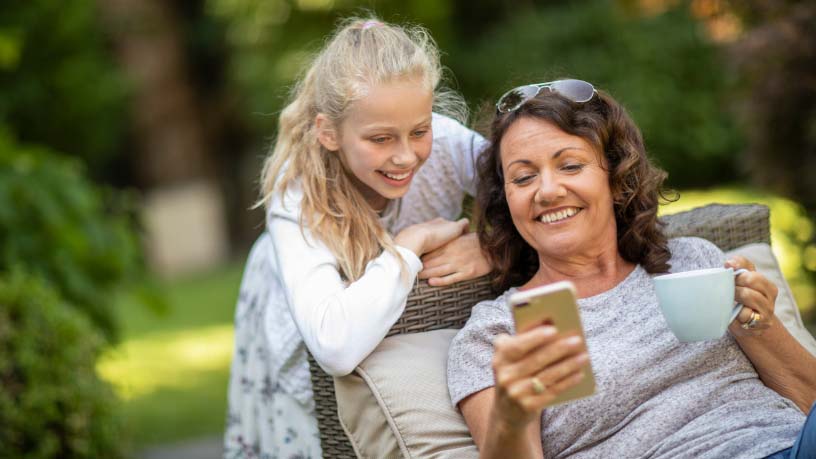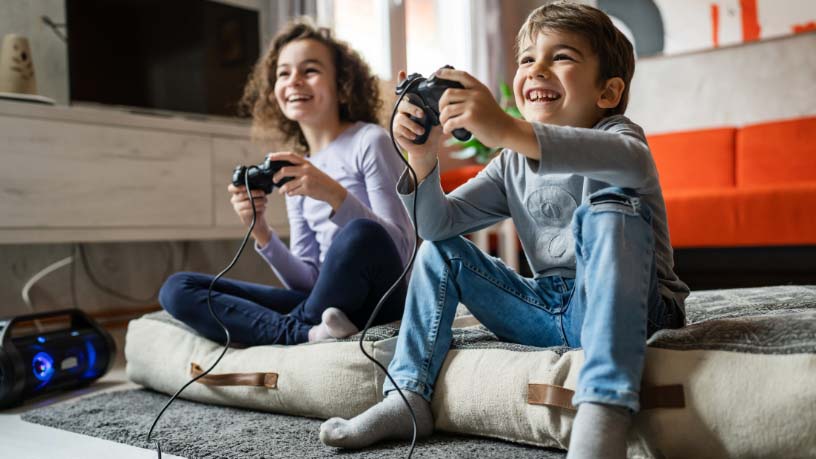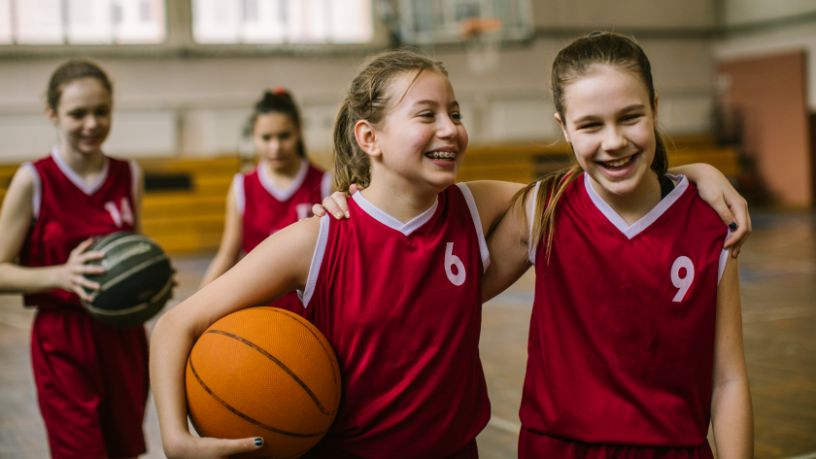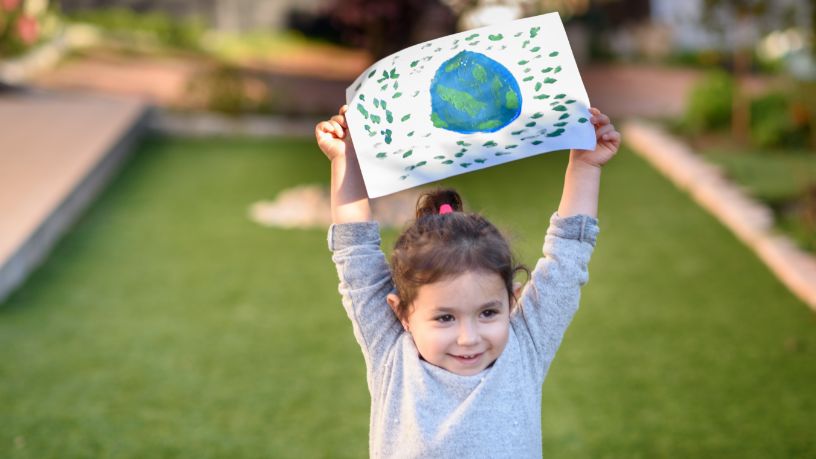Learn about the difference between bullying and conflict.
On this page
Key takeaways
Common forms of bullying range from the physical to the digital.
There are signs to look out for when someone is being bullied.
Bullying in Australia is a serious problem, with more than one in 5 males and one in 6 females aged between 8 and 18 reporting being bullied at least once a week.1
When you’re trying to understand bullying, it’s important to first make the distinction between bullying and conflict.
Conflict is a disagreement where both parties express their views.
Bullying, on the other hand, reflects repetitive, intentionally aggressive, unkind and or harmful behaviour. Bullying usually is about exerting power over someone else.
Bullying can happen anywhere, including at school, online, in shopping centres or playgrounds, and even at home.
Here, we look at some of the different forms of bullying, plus what you can do if a loved one experiences it.
[Two primary school age children stand in a photographic studio talking to camera. Text appears on screen asking the children questions that they answer to camera]
[Text on screen: Today we talk about Bullying]
[Giggles, laughter]
[Text on screen: What are bullying behaviours?]
Boy: In short, basically any way you can be mean.
Girl: Somebody, um, interfering about how somebody looks, or how they dress, or how they act.
[Text on screen: Can bullying happen in different environments?]
Boy: Yeah, it can happen anywhere.
Girl: At school, at a park…
Boy: It can happen in the middle of nowhere!
Girl: On the internet. Anywhere.
[Text on screen: What is something you can do if you see someone getting bullied?]
Boy: Stand by your friends.
Girl: Even if they’re not your friends.
Boy: Just stand by, in general, people.
Girl: Could walk up to that person and say, “that’s not okay, mate,” and if they keep on doing it you can go tell the teacher. Even if it’s yourself, you can stand up for yourself.
Boy: And you can call Kids Helpline!
Girl: Yeah!
[Text on screen: Kids Helpline @ School has conversations like these with young people across Australia every single day. Learn more about our range of topics at school.kidshelpline.com.au]
Both: 1800 55 1800!
Common types of bullying
Physical bullying
This form of bullying might include hitting, kicking, poking, punching, spitting, tripping or pushing. It may also involve breaking someone’s things, or even making rude hand gestures.
Verbal bullying
This might include saying or writing hurtful words, using insults, teasing or name-calling to humiliate or intimidate someone. Verbal bullying may also involve threats intended to cause someone harm.
Relational or social bullying
Also known as ‘indirect bullying,’ this involves manipulating relationships or someone’s social status to harm them. This might include spreading rumours, lying, playing mean jokes, excluding someone, damaging their reputation or embarrassing someone in public.
Cyberbullying
Online bullying can take place via social media platforms, email, chat rooms, networking sites or messaging apps. It often involves threatening messages, spreading rumours and hurtful messages or sharing embarrassing content such as pictures or videos.
Signs a child is being bullied
It may be hard for a child to talk to you about bullying. However, other signs might point to the problem, such as:
- unexplained injuries. This could include frequent or unexplained injuries, bruises or marks
- avoiding school or social activities. The child may suddenly avoid going to school or certain situations or social activities they previously enjoyed
- changes in school performance. A decline in academic performance or a loss of interest in school might be a response to the stress and anxiety caused by bullying
- lost or damaged belongings. The child might come home with missing or damaged belongings, or ripped clothing, which could be a result of bullying or theft
- frequent illness complaints. Unexplained headaches, stomach aches or other physical complaints may be a sign of stress, anxiety or depression. Significant changes in eating habits could be a response to emotional distress caused by bullying
- emotional changes. Things like mood swings, increased irritability, sadness, anxiety or depression may indicate a bullying problem.
What to do when a child is being bullied
Addressing bullying requires a collective effort from parents or carers, educators, peers and community members to create a safe and respectful environment where bullying is not tolerated.
Some children might feel ashamed or embarrassed about their bullying experience, and may worry that talking about it will make things worse.
Likewise, if a child has been subjected to bullying for an extended period, they might come to accept it as a part of their daily life. This may lead them to believe that discussing it with a parent or trusted adult won't make a difference.
Here are some tips on helping a child who is being bullied:
Listen and validate
It’s important to create an open, non-judgmental environment where a child feels comfortable sharing their experiences. Let them know that bullying is never acceptable.
Listen to them and validate their emotions. Let them know you believe them. Sometimes, sharing any personal experiences may help them feel less alone.
Stay calm
You may feel upset and angry when you discover that a loved one is being bullied. However, it’s important to stay calm when discussing the situation with the child. This will help reassure them that you can handle the situation together.
Gather information
Ask the child to provide details about any bullying incidents. Understand where and when it happened, who was involved and whether there were any witnesses. Encourage them to keep a record of future incidents.
Contact the school or authority
Bullying can be hard to manage. You should never have to solve it on your own, or expect the child to deal with it alone.
Talk to the child's school or relevant authority to report the incidents. Share the information you’ve gathered, and request appropriate actions be taken.
Collaborate with school staff to develop a plan to ensure the child's safety and wellbeing. Schools usually have anti-bullying policies and intervention strategies in place.
Teach coping strategies
Assure the child that the bullying is not their fault. Remind them it’s the bully who’s behaving badly. Help them develop coping strategies to deal with the emotional impact of bullying. This might include encouraging them to stay calm, walking away from the bully if possible and seeking help from a teacher or trusted adult.
Promote assertiveness and self-confidence
Encourage the child to assert themselves confidently. Teach them to call out the bully’s behaviour.
Encourage social support
Encourage the child to spend time with existing friends. Help them get involved in activities they enjoy, particularly outside of school if that’s where the bulling is happening. Having a strong social support network and focusing on things they enjoy can help reduce the impact of bullying.
Limit online exposure
If the child is exposed to cyberbullying, help them set privacy settings on their devices. Teach them about online safety and boundaries. Limit their exposure to certain platforms or individuals.
Consider professional support
If the child is severely impacted by bullying, consider seeking support from a counsellor or psychologist who specialises in childhood bullying-related issues.
Resources
Kids Helpline is a free, 27/7 confidential counselling service that kids can call on 1800 55 1800.
Lifeline Australia offers 24/7 crisis support online and on the phone at 13 11 14.
Beyond Blue offers 24/7 mental health information and support online and on the phone at 1300 224 636.

At Bupa, trust is everything
Our health and wellbeing information is regularly reviewed and maintained by a team of healthcare experts, to ensure its relevancy and accuracy. Everyone's health journey is unique and health outcomes vary from person to person.
This content is not a replacement for personalised and specific medical, healthcare, or other professional advice. If you have concerns about your health, see your doctor or other health professional.
1Australian Human Rights Commission. (2024). Children and young people. Australian Human Rights Commission.
You might also like...
How to talk to your kids about social media
Social media is a daily part of our kids’ lives, whether we like it or not. So, what are the risks and benefits, and how can we keep our kids safe online?
Friendships: The importance of healthy boundaries
We spoke to a psychologist to find out why it’s important for children to make friends and how you can help them set boundaries in their relationships.
How to help children make friends
Making friends isn’t always easy, but there are things you can do to help your child make meaningful connections and healthy friendships.
Eco Anxiety: How to help kids manage it
Our world is being affected by climate change, and so is the mental health of our kids. So how can you help them if they experience eco-anxiety?





